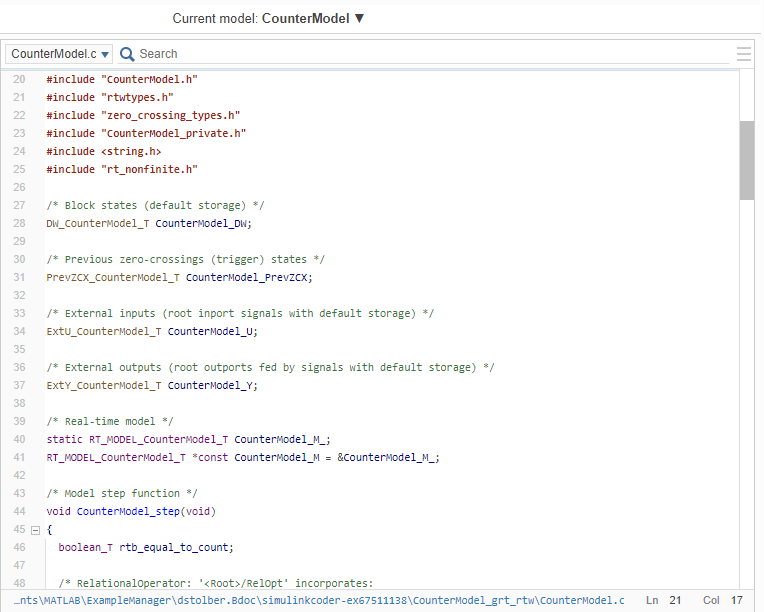代码生成
代码生成和调试、报告生成
在迭代模型设计后,配置代码生成器如何从模型中生成 C 或非类 C++ 代码。您可以配置代码生成器,以便生成可与外部代码对接以及在各组件与子组件之间对接的代码。代码接口配置涉及选择输出类型和将模型元素映射到代码定义(存储类和函数自定义模板)。
当您的配置完成时,使用模型顾问来检查模型是否做好生成代码的准备。从模型中生成源代码、目标代码或可执行程序。也可以选择生成 HTML 报告,以便查看、分析、发布或存档代码生成结果。
将生成的代码用于实时和非实时应用程序,包括快速原型和仿真加速。
要快速入门,请参阅 Simulink Coder。

